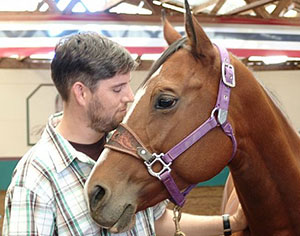Collapsing Trachea
 Get More Pet Tips
Get More Pet Tips
Content provided Pet Talk with Dr. B is meant for educational purposes on health care and medical issues that may affect pets and should never be used to replace professional veterinary care from a licensed veterinarian. This site and its services do not constitute the practice of any veterinary medical health care advice, diagnosis or treatment.
Collapsing Trachea:
Share This Everywhere!
The trachea (windpipe) is a tube of c-shaped cartilage rings that connect the oral cavity with the lungs. The c-shaped cartilage has a membrane that lines the top surface. In dogs, these cartilage rings can weaken and the tracheal membrane loses its rigidity,causing the trachea to collapse. A collapsing trachea will cause clinical signs ranging from increased noise on inspiration to a characteristic “honking” cough, especially during exercise.
The trachea can be divided into an extra-thoracic portion (outside of the chest) and an intra-thoracic portion (inside the chest). The area of the collapse can be confined to an isolated portion in the trachea or it may encompass the entire structure. The most common area for the collapse is the point at which the trachea enters the chest.
Tracheal collapse is common in middle-aged and older toy and miniature breeds, with Yorkshire terriers, poodles, and Pomeranians being the most affected. Many times the coughing is triggered by activity or exercise. Secondary problems, such as obesity, increased respiratory irritants (cigarette smoke), development of a respiratory infection, or anesthesia involving the placement of an endotracheal tube, can exacerbate the disease. Dogs suffering from an extra-thoracic collapsed trachea can often have a cough initiated by palpation of that area. A definitive diagnosis is often made by endoscopy, radiography, or fluoroscopy.
Treatment of a collapsing trachea usually focuses on a combination of correcting any secondary problems and medically managing the cough. Any secondary problems must be addressed and corrected, including an owner giving up cigarettes or pets undergoing a strict diet plan. Other alterations to a pet’s environment that can improve the disease include removing stress, restricting activity if weightloss is not a concern, and wearing a harness instead of a collar to take any pressure off of the trachea.
Medical management involves medications such as cough suppressants, bronchodilators, and steroids. Surgical correction is usually not considered until medical management has proven ineffective. Surgical correction involves the application of plastic rings to the external surface of the trachea or insertion of intraluminal stents inside the trachea. Both procedures have a high rate of complications and should be discussed and performed by a veterinary surgical specialist.



